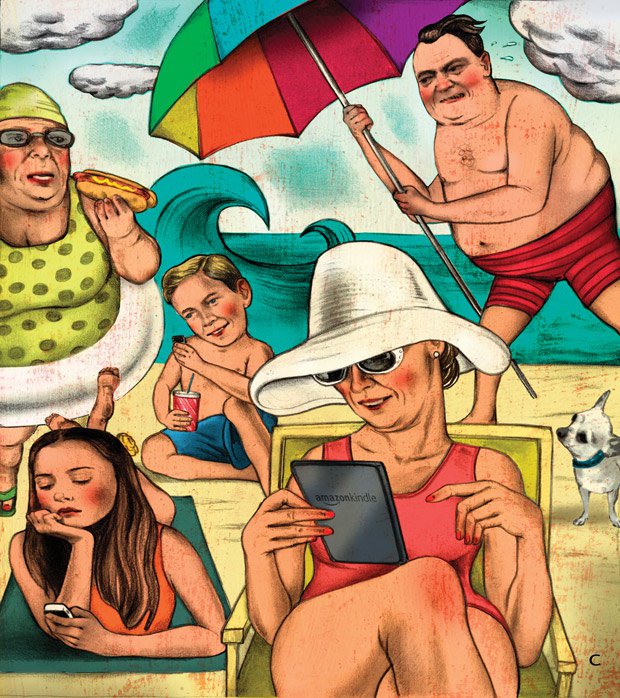A retired judge takes a decidedly light look at his life on the bench.

Why Judges Wear Robes, by Retired Judge J. Samuel Johnston, Warwick House Publishers, $20
In 1977, after only four years of practicing law, J. Samuel Johnston was given an interim appointment to the Circuit Court of Campbell County. He was 30 years old, the youngest judge in Virginia at that time. Being a judge is a “unique occupation,” says Johnston, who notes that he was required to be “an economist, an administrator, a counselor, a therapist, a preacher, a dictator and a doctor, all rolled into one.”
Three years ago, after 31 years on the judicial bench, Johnston put down his gavel, retired, and decided to share some of his more memorable courtroom experiences with the public in a soft-cover book titled Why Judges Wear Robes. One gets a sense of its tone from a cursory glance at its cover, which boasts a picture of a yellow Labrador wearing a judge’s robe and holding a gavel.
The book contains nearly 100 stories of humorous incidents that Johnston witnessed himself or heard about from other judges. Most of the stories poke fun at the innocent ignorance or intentional obstinacy of defendants appearing in his courtroom, such as the one who, when advised that she could only be tried by the court if she waived her right to a jury trial, turned to the jury box and waved.
The book is in some ways the print equivalent of the television show “Judge Judy.” Johnston acknowledges that the book is not a realistic portrayal of life in the courtroom. Though the courtroom anecdotes are mostly true, they are not the norm.
Johnston’s decision to omit tragic cases and concentrate instead on light-hearted nuttiness was a conscious one: “Witnessing the inhumanity that humans can inflict upon other humans,” was sobering, he says. “I saw a lot of misery, a lot of hurt, a lot of evil. I saw a man who had taken a baby and dipped it in scalding water, and it had third-degree burns over 90 percent of its body. I saw a child go hysterically blind in a divorce case, and lose her eyesight for a period of time because of her parents’ arguments. I saw a man who branded his girlfriend 15 times while she held their two-year old child because of her perceived infidelity. … [The amusing stories] stand out because they’re contrary. The contrast is so unique and so brazen and so bold when you deal with murder, rape and robbery and all of a sudden something full of mirth or something hilarious happens. And I wanted to make people laugh, not cry.”
A few of the stories are actually jokes. Johnston warns in the introduction that “80 percent of the book is factual, 10 percent is given to hyperbole, and 10 percent is apocryphal.” However, it is left up to the reader to decide which tales are true and which are embellished, or not true at all.
I’m guessing he was pulling our legs when he tells the story about a lost hiker eating a California condor. The hiker was found not guilty since he explained that he’d been lost for three days and only ate the endangered bird to survive. It is an outrageous tale, but seems in the realm of possibility; at least, until he concludes the story as follows: “The judge said, ‘Before you go, I am somewhat curious. Just what does California condor taste like?’ The defendant thought a moment and then said, ‘Well, Judge, it’s a cross between a spotted owl and a bald eagle,’ and walked out the door.” Funny enough, but I’m pretty sure that story falls into the apocryphal category.
In addition to defendants, Johnston takes jabs at lawyers, other judges, his staff and even himself. He writes that a wife in a divorce case testified that she was so scared of her husband that she once fled from her house, ran to the bushes and hid for three days. Johnston writes, “I stopped her story and said, ‘Ma’am, you can’t fool this judge; that is a blatant fabrication…I have a super memory, and I remember Christmas of 1983 …you’d have frozen to death the first night at 17 degrees below zero.’ …The woman furrowed her brow, looked confused and said, ‘Judge, Mr. and Mrs. Bush are my neighbors.”
Johnston’s simple country mentality reverberates throughout the book. A few bits of legalese and courtroom jargon are thrown in, but for the most part the tales are like those you would hear a couple of good ’ole boys telling each other while sitting in rockers on the front porch of the local trading-goods store. The voice that comes through is that of a natural storyteller, which is exactly what Johnston is. David Wells Studios sat down with him to record additional courtroom stories and compiled them on six CDs. (The book and CDs are available through Johnston’s website: Jural-Jollity.com.) Johnston quips that the project is “seven hours of my B.S.,” adding: “Can you believe that?”
Johnston had many humbling experiences throughout his lengthy career, he writes, but none more so than on his very first day as a judge. On that day, he had elected to not wear a robe, and just as he was getting ready to begin proceedings, a prosecutor passed him a note. As Johnston explains, “The note read, ‘Sam, check your zipper.’ I looked down at my zipper; it was wide open, and all I could see was the white of my underwear.” He held court all day, refusing to take a break for fear that his secret would be, er, exposed.
And now you know why judges wear robes.









